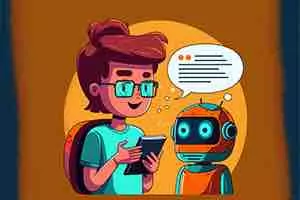Generative AI is quickly becoming one of the most exciting tools in the educational landscape. It’s not just about automating tasks or crunching data anymore. AI is now capable of enhancing creativity, making learning more personalized, and freeing up educators to focus on what matters most: guiding and inspiring their students.
This article explores how teachers and education administrators can creatively integrate AI into their schools and classrooms to unlock its full potential.
Uncover AI’s Secret Role in Boosting Student Creativity
When we think about creativity, AI might not be the first thing that comes to mind. But generative AI is changing that. Instead of replacing creative tasks, it enhances them. Tools like ChatGPT can help students brainstorm ideas, generate new perspectives, or even assist in drafting their creative work.
Imagine a scenario where a student is stuck on how to start an essay. AI can suggest opening lines, outline structures, or provide inspiration to get them past writer’s block. For art and design students, AI tools like DALL-E can help them visualize their concepts before diving into the actual creation process.
The key is not to see AI as a replacement for human creativity, but as a powerful collaborator that helps students think in new, exciting ways.
The Surprising AI Tool Teachers Can Master in Minutes
AI might sound complex, but some tools are shockingly easy to use. Tools like ChatGPT require no technical background. Teachers can quickly learn to integrate AI into lessons without having to spend hours on training.
For example, a teacher might ask ChatGPT to generate discussion prompts for a literature class. In minutes, they have several ideas that can spark meaningful conversations among students. Or, it can help generate quizzes, provide feedback on student writing, or even explain difficult concepts in simpler terms.
The best part? These tools are intuitive. You don’t need to be an AI expert to use them effectively in the classroom.
Why AI Can Personalize Learning Better Than You Think
One common concern about AI is that it will make learning feel robotic or impersonal. However, AI can actually do the opposite by helping personalize learning experiences in ways that are difficult for teachers to achieve alone.
AI can analyze student performance data and identify where individual students are struggling. It can suggest tailored resources, activities, and challenges to meet students at their unique levels. For instance, AI can provide personalized reading material that adjusts to a student’s reading level, or suggest math problems that match their learning pace.
This means that every student, whether they’re ahead or behind, gets the support they need to grow. Teachers can then focus on the human side of education—coaching, encouraging, and connecting with their students.
Unlock Untapped Collaboration Potential with Generative AI Projects
AI isn’t just a tool for individual use—it can foster collaboration, too. Imagine group projects where students work together to solve real-world problems, with AI acting as a creative assistant.
For example, students working on a project to design a sustainable city could use AI to help brainstorm ideas, model solutions, and even create visuals for their presentations. AI can offer diverse perspectives, inspire creative problem-solving, and encourage students to think critically as they work together.
By integrating AI into group work, students aren’t just collaborating with each other—they’re collaborating with AI, learning how to harness it for teamwork in the real world.
How AI Frees Teachers to Focus on What Really Matters
Teachers are often stretched thin with grading, lesson planning, and administrative tasks. Generative AI can help reduce this load, allowing teachers to focus more on their students’ needs.
AI tools can assist in grading essays, providing initial feedback, or creating individualized lesson plans. This doesn’t mean AI replaces the teacher’s role in assessment or planning. Instead, it saves them time on routine tasks, giving them more space to mentor students, create engaging lessons, and foster a positive classroom environment.
The more routine tasks AI can handle, the more time teachers have to build relationships with students, guide them through challenges, and nurture their love for learning.
Conclusion
Generative AI holds incredible potential for both teachers and students. By using it creatively, educators can boost student creativity, personalize learning, foster collaboration, and save valuable time for what really matters.
The key to successfully integrating AI in education is not to see it as a replacement but as a tool—a tool that can unlock new opportunities, enhance learning experiences, and empower both teachers and students to achieve more.
As generative AI continues to evolve, educators who embrace it will be at the forefront of a more innovative, engaging, and personalized approach to teaching and learning.
